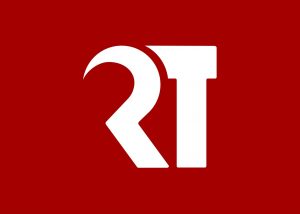On December 7, the Thai student activist group Free People unveiled the logo of its new Restart Thailand movement – and opinions, to put it mildly, are mixed.
Free People (formerly Free Youth) is one of around a dozen groups associated with the string of mass public demonstrations that have taken place in Thailand in recent months, which have demanded a new constitution and made explosive calls for checks on the power of the monarchy.
In announcing the launch of its Restart Thailand (RT) movement, Free People also unveiled a new logo featuring a stylized R and T, clearly patterned on a communist hammer and sickle, against a red backdrop. While the exact shade of red is a few shades to the right of Lenin, the resemblance to the flag of the defunct Communist Party of Thailand and its big brothers in Beijing and Moscow is unmistakable.
The statement that accompanied the logo struck a similar theme, describing the aim of RT (its acronym offers another unfortunate resonance) as the creation of an “equal country.” “This is a new movement where nothing will be the same,” the group stated. “[We’ll] raise awareness of the oppressed working class, no matter if you are students, office workers, non-uniformed staff, farmers or civil servants. We are all oppressed workers.” (The statement is available in Thai here.) Earlier, the group said that its goal was “a state where the people reign supreme.”
While the hammer and sickle was historically intended to represent the union of the workers and the peasantry, the image has accrued a raft of unsavory overtones, not least in the Thai context. Throughout the Cold War, fear of communist subversion offered the pretext for the military’s continued intervention in politics, and building up of the monarchy, which was in an enfeebled state after World War II, as an untouchable pillar of Thai identity. Throughout that period, right-wing royalists and conservative groups have used charges of communism to legitimize state violence against student activists and others demanding democratic reforms.
Since the logo was unveiled, many people, including supporters of the protest movement, have argued that the the appropriation of the hammer and sickle could merely play into such claims. “If the intention is to make it looks like a grassroots and labor movement, it does,” wrote one Thai Twitter user, “but it also played right into the government’s and the military’s propaganda.”
Ken Lohatepanont, a journalist at the Thai Enquirer, pointed out that defenders of the protest movement have spent months explaining that “what they seek is reform, not revolution. That they believe a constitutional monarchy remains Thailand’s ideal form of government.” He added, “It’s an argument that will become even more difficult still to accept with the Free Youth Movement’s new ‘Reform Thailand’ logo.”
It’s not hard to see what the Free People activists were shooting for. One of the most pernicious legacies of the Cold War in Thailand has been to foreclose any mainstream discussion of the material interests that underpin the country’s monarchy-military nexus. That young Thai protesters are willing to question the influence of Thailand’s massive corporate conglomerates and the monarchy’s immense wealth has added an important economic dimension to their calls for democratic reform.
But after decades in which “communism” has been depicted as the antonym of the monarchy, Buddhism, and the Thai nation, it is hard to see how this logo will help the movement broaden its tent. In recent weeks, the Thai government has charged 23 protest leaders with violations of the country’s archaic lese-majeste law, which is used to quash criticisms of the king and the royal family. In this context, giving the government any pretext to delegitimize the protest movement as “communist” seems counterproductive. Sure enough, on November 8, Prime Minister Prayut Chan-o-cha said that he would ask his legal team to determine whether the RT campaign had an “illegal” agenda.
The logo controversy points to deeper challenges facing Thailand’s current protest movement. While it is right to point to the monarchy as the central institution of Thai politics, whose reform is the sine qua non of any meaningful or lasting democratic change, it faces challenges in gaining the support of a majority of Thais, many of whom still harbor affection for the monarchy or the late King Bhumibol Adulyadej.
There was no reason why the movement could not have included a materialist or economic critique without adopting the hammer and sickle. “Love the idea of galvanizing all types of workers but is our progressive movement going retro?” asked one Thai user on Twitter. “Are we going forward or backward with this kind of symbolism? Keeping and expanding allies is important.”

































